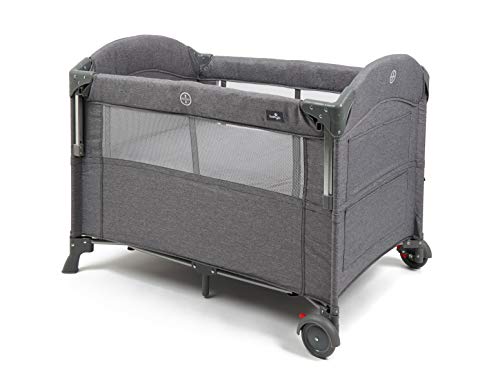
Cot Sale
FollowOverview
-
Founded Date 19 June 1978
-
Sectors Logistics
-
Posted Jobs 0
-
Viewed 2
Company Description
There’s A Good And Bad About Baby Cots
The Ultimate Guide to Baby Cots: Choosing the Best for Your Little One
When it pertains to preparing for a new arrival, choosing the ideal baby cot is among the most crucial decisions expectant moms and dads will make. A baby cot serves not only as a place for the baby to sleep but likewise as a safe sanctuary where they can grow, explore, and establish. This guide looks into the various kinds of baby cots, key factors to consider for selection, safety standards, and more, helping parents browse the myriad alternatives available.
Kinds Of Baby Cots
Picking a baby cot includes comprehending the various types available on the marketplace. Each has its unique features and advantages that cater to various needs and way of lives:
| Type of Cot | Description |
|---|---|
| Standard Cot | A standard design with repaired sides, designed for long-term usage until the child shifts to a bed. |
| Portable Cot | Light-weight and collapsible, ideal for travel or smaller home. |
| Crib | Usually smaller sized than a standard cot, created particularly for babies. |
| Convertible Cot | A versatile choice that can change into a toddler bed, daybed, or even a full-size bed as the kid grows. |
| Co-Sleeper | A bedside crib that attaches to the parents’ bed, permitting for easy nighttime gain access to while keeping the baby safe. |
| Moses Basket | A lightweight, portable basket ideal for babies, allowing simple motion from room to space. |
Key Considerations When Choosing a Baby Cot
Selecting the right cot involves several considerations to ensure it fulfills safety standards while also being practical for everyday usage. Here are some crucial elements to bear in mind:

- Safety Standards: Ensure that the Cot Sets satisfies the security regulations set by your nation’s standards.
- Product: Look for non-toxic products that will not seep harmful chemicals into the baby’s environment.
- Adjustable Height: Consider cots with adjustable bed mattress heights, which make it much easier to lift the baby in and out as they grow.
- Size: Make sure the cot fits easily in the intended space, permitting space for safe movement around it.
- Durability: Opt for convertible cots that can transition as your child grows, saving both area and money.
- Aesthetic Appeal: Select a style and color that complements your nursery design.
- Relieve of Assembly: Review how intricate the assembly procedure is; some cots can be cumbersome to assemble.
Security Tips for Baby Cots
Guaranteeing the baby’s security while they sleep is paramount. Here are important security pointers for baby cots:
- Use a Firm Mattress: A company mattress that fits snugly in the cot reduces the danger of suffocation.
- Bed linen: Keep soft bedding, pillows, and toys out of the cot to decrease the risk of Sudden Infant Death Syndrome (SIDS).
- Look for Gaps: Ensure that the side rails and bed mattress do not have gaps where the baby might get caught.
- Stability: Confirm that the cot is tough and does not wobble or tilt when weight is used.
- Routine Inspections: Frequently look for loose screws or broken parts that could pose hazards.
- Constantly Keep the Cot Away from Hazards: Position the cot away from windows, cables, and other possible safety threats.
Extra Features to Consider
Beyond fundamental safety and performance, lots of modern baby cots come equipped with additional functions developed to improve use and comfort:
- Mobiles: These can help relieve a baby and promote their visual advancement.
- Storage Options: Cots with integrated drawers or racks can help with organization, keeping necessary items within reach.
- Convertibility: Look for cots that include conversion packages for eventual change into beds as your child grows.
- Mattress Height Adjustability: Adjusting the height of the bed mattress can accommodate various age and movement levels.
- Wheels for Mobility: Some cots feature locking wheels, permitting moms and dads to move them quickly from room to room.
FAQs About Baby Cots
Q1: How long can a baby utilize a cot?
Many babies can use a cot from birth until they are roughly 2-3 years of ages, depending on their size and the cot’s weight limitation.
Q2: When should I transition my baby from a cot to a bed?
It is usually best to shift your child when they begin to climb up out of the cot or reach the weight limitation, usually around 2-3 years of age.
Q3: Is it safe to utilize pre-owned baby cots?
Second-hand furniture can be utilized, however it’s necessary to guarantee the cot satisfies existing security standards and hasn’t been recalled. Examine for wear and tear and guarantee it is free from threats.
Q4: What are the best products for baby cots?
Pick cots made of hardwood or top quality composite products that are licensed devoid of poisonous compounds.
Q5: Should I get a crib or a bassinet for a newborn?
A bassinet might be a much better short-lived choice for newborns as it is smaller sized and more portable, enabling close sleeping arrangements. Nevertheless, a crib or cot is a long-term solution as the baby grows.
Picking the right baby cot is a substantial investment in your kid’s security and convenience. By understanding the different kinds of cots available, essential functions to search for, and vital precaution, parents can make informed choices that cater to their household’s needs. Taking the time to select an appropriate cot can foster a safe sleeping environment, giving comfort as they welcome their new addition into the world. Whether going with a basic cot, a portable alternative, or a stylish co-sleeper, guaranteeing security, quality, and practicality will result in lots of serene nights ahead for both moms and dads and baby.


